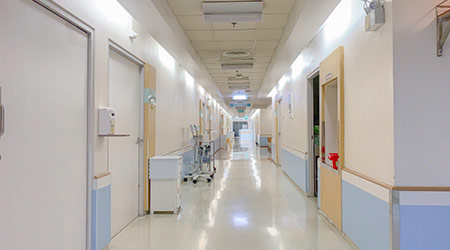Wireless lighting controls and tunable systems now are easier to incorporate into new and existing healthcare facilities. That said, a few simple steps can save time, energy, and maintenance. Perhaps most critical to lighting system master planning is the development of lighting standards and guidelines, according to an article from Building Operating Management on the FacilitiesNet website.
The lighting industry has seen immense changes with the widespread adoption of LED sources. For years, manufacturers focused on the efficacy of LEDs.
As efficacy has continued to increase and lighting loads in buildings decrease, manufacturers have focused on lighting quality.
This push has led to new metrics and the ability to manipulate light sources to better serve patients, staff and visitors. Since LEDs are small semiconductors, advances in lighting controls also continue to offer greater flexibility and programming options related to energy efficiency and use.

 Building Sustainable Healthcare for an Aging Population
Building Sustainable Healthcare for an Aging Population Froedtert ThedaCare Announces Opening of ThedaCare Medical Center-Oshkosh
Froedtert ThedaCare Announces Opening of ThedaCare Medical Center-Oshkosh Touchmark Acquires The Hacienda at Georgetown Senior Living Facility
Touchmark Acquires The Hacienda at Georgetown Senior Living Facility Contaminants Under Foot: A Closer Look at Patient Room Floors
Contaminants Under Foot: A Closer Look at Patient Room Floors Power Outages Largely Driven by Extreme Weather Events
Power Outages Largely Driven by Extreme Weather Events